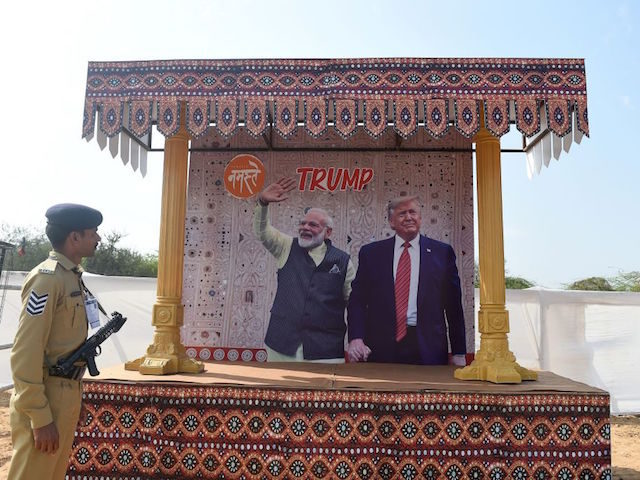Nationalist, anti-China policies implemented by Indian Prime Minister Narendra Modi echo those favored by U.S. President Donald Trump’s administration over the past four years.
As Trump’s term draws to a close, Modi promises to keep the once-U.S.-led fight to contain China alive well beyond January 2021.
Modi was elected to the office of prime minister in 2014 after running successfully on a populist platform as a member of India’s Hindu nationalist BJP party. Similar to Trump’s America First agenda, Modi sought to reignite Indian society by prioritizing the needs of the nation’s majority Hindus. This platform proved victorious again in 2019 when Modi won reelection in another landslide victory, earning him five additional years in office. Over the past several months, Modi has initiated a handful of strategic anti-China policies across the economic and military sectors designed to contain the Asian giant and, in turn, put India’s needs first.
Below are three key ways Modi has assumed the anti-China mantle.
“Self-Reliant India”
Modi in April launched his “Self-Reliant India” initiative, which encourages Indian businesses to become less dependent on foreign supply chains. He announced the effort as a deliberate response to the Chinese coronavirus pandemic, which Modi said had exposed India’s over-reliance on China for trade and manufacturing. The program has since spawned several successful and promising endeavors.
India’s Reliance Industries announced on July 15 that its telecommunications subsidiary, Jio, was working to introduce an entirely domestic 5G service to the country, in line with the initiative’s challenge to develop domestic supply chains.
“Jio has designed and developed a complete 5G solution from scratch. This will enable us to launch a world-class 5G service in India, using 100 percent homegrown technologies and solutions,” Reliance Industries chairman Mukesh Ambani said at the 43rd Reliance Annual General Meeting.
“Calling this a ‘Made in India’ 5G solution, Ambani said this service will be ready as soon as the 5G spectrum is available in India and can be ready for field deployment next year. He assured that the upgrade from 4G to 5G will be easy,” the Times of India reported.
Ambani in his speech dedicated the launch of 5G service in India to Modi’s Self-Reliant India vision, according to the newspaper: “Ambani also said that once it will be set up in India, the company aims to offer it to other global telecom operators.”
Border Crackdown on China’s People’s Liberation Army (PLA)
India and China’s respective border regiments clashed on June 15 while stationed along the two countries’ unmarked Himalayan boundary in the northern Indian state of Ladakh. The skirmish killed 20 Indian soldiers and an estimated 40 Chinese troops, resulting in the deadliest military conflict between the two Asian neighbors in at least 45 years. India and China have been engaged in an ongoing border dispute in the Himalayas ever since.
Reports in September indicated that the Indian Army was working to bolster its Special Frontier Force (SFF) as part of an overall effort to secure its border with China amid escalating tensions over the unmarked boundary. The unit is comprised almost entirely of ethnic Tibetan soldiers and was founded by India in 1962 during its first border war with China. An ethnic Tibetan SFF soldier was killed in Ladakh on August 29 in a border confrontation between Indian and Chinese forces near Pangong Tso lake. The deadly attack highlighted China’s continued threat to India along their unmarked border.
The conflict inspired an ongoing Boycott China campaign across India, which has prompted New Delhi to ban at least 218 Chinese-owned smartphone apps so far citing national security concerns.
Opting out of the RCEP
India on November 15 opted not to join the world’s largest trading bloc, the Regional Comprehensive Economic Partnership (RCEP). The accord requires member nations to participate in global supply chains and to court foreign investment, neither of which align with Modi’s Self-Reliant Initiative.
Foreign Policy noted on November 23 that “India has negative trade balances with several RCEP member countries” as a result of previous trade agreements made under the accord.
“Critics have also linked such agreements, such as FTAs [Free Trade Agreements] with Japan, South Korea, and ASEAN [the Association of Southeast Asian Nations], to the decline of manufacturing in India,” the American magazine added.
“[T]rade associations argue that industries [in India] such as electronics and light manufacturing have suffered on account of FTAs. There is no denying that policy and regulatory reforms and the effort to build a supportive infrastructure did not accompany past trade deals, limiting potential gains from FTAs,” Foreign Policy acknowledged.
“One of the biggest complaints is that the absence of safeguards in former FTAs have allowed an unchecked flow of Chinese imports into India,” the magazine pointed out.

COMMENTS
Please let us know if you're having issues with commenting.